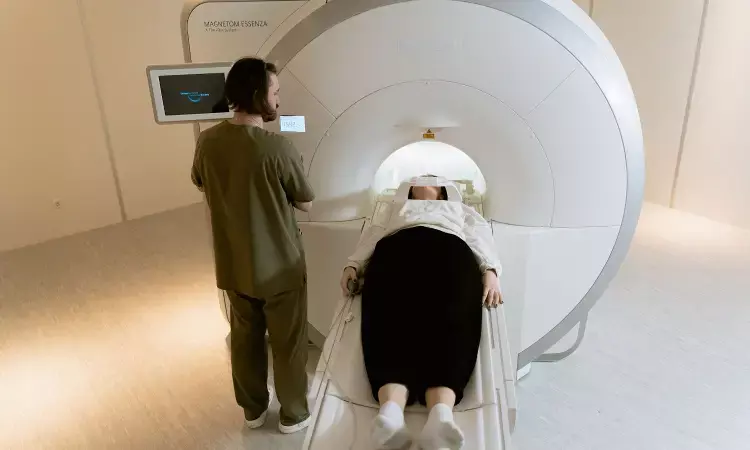- Home
- Medical news & Guidelines
- Anesthesiology
- Cardiology and CTVS
- Critical Care
- Dentistry
- Dermatology
- Diabetes and Endocrinology
- ENT
- Gastroenterology
- Medicine
- Nephrology
- Neurology
- Obstretics-Gynaecology
- Oncology
- Ophthalmology
- Orthopaedics
- Pediatrics-Neonatology
- Psychiatry
- Pulmonology
- Radiology
- Surgery
- Urology
- Laboratory Medicine
- Diet
- Nursing
- Paramedical
- Physiotherapy
- Health news
- Fact Check
- Bone Health Fact Check
- Brain Health Fact Check
- Cancer Related Fact Check
- Child Care Fact Check
- Dental and oral health fact check
- Diabetes and metabolic health fact check
- Diet and Nutrition Fact Check
- Eye and ENT Care Fact Check
- Fitness fact check
- Gut health fact check
- Heart health fact check
- Kidney health fact check
- Medical education fact check
- Men's health fact check
- Respiratory fact check
- Skin and hair care fact check
- Vaccine and Immunization fact check
- Women's health fact check
- AYUSH
- State News
- Andaman and Nicobar Islands
- Andhra Pradesh
- Arunachal Pradesh
- Assam
- Bihar
- Chandigarh
- Chattisgarh
- Dadra and Nagar Haveli
- Daman and Diu
- Delhi
- Goa
- Gujarat
- Haryana
- Himachal Pradesh
- Jammu & Kashmir
- Jharkhand
- Karnataka
- Kerala
- Ladakh
- Lakshadweep
- Madhya Pradesh
- Maharashtra
- Manipur
- Meghalaya
- Mizoram
- Nagaland
- Odisha
- Puducherry
- Punjab
- Rajasthan
- Sikkim
- Tamil Nadu
- Telangana
- Tripura
- Uttar Pradesh
- Uttrakhand
- West Bengal
- Medical Education
- Industry
Incorporating Chest CT and Symptoms into COPD Diagnostic Criteria may identify individuals with poor outcomes: JAMA

Researchers have found in two longitudinal cohorts that Incorporating chest CT imaging and respiratory symptoms into the diagnostic criteria for chronic obstructive pulmonary disease (COPD) significantly improved the identification of individuals at risk for poor respiratory outcomes. This updated approach categorized 15.4% of individuals without airflow obstruction as having COPD under a minor diagnostic category, as reported by Dr. Surya P. Bhatt at the American Thoracic Society annual meeting in San Francisco. This study was published in JAMA Network.
This research, using data from the Genetic Epidemiology of COPD (COPDGene) and Canadian Cohort Obstructive Lung Disease (CanCOLD), assessed whether this novel strategy enhanced COPD diagnosis and prediction of risk. This is a cohort study using two large longitudinal cohorts: COPDGene (n = 10,305) and CanCOLD (n = 1,561).
Data were obtained from November 2007 to August 2022 for COPDGene and from November 2009 to December 2023 for CanCOLD. The new diagnostic model characterized COPD using two categories: major (airflow obstruction and one of five minor criteria) and minor (at least three of five minor criteria). Minor criteria were emphysema or bronchial wall thickening on CT, dyspnea, poor respiratory quality of life, and chronic bronchitis.
The main outcomes were all-cause mortality, mortality due to respiratory causes, exacerbations, and annualized FEV1 decline. The analysis examined how the new schema of diagnosis impacted COPD classification and related health outcomes.
Key Findings
• Among 9,416 COPDGene adults, 811 of 5,250 (15.4%) with no airflow obstruction were newly identified with COPD by the minor diagnostic category and 282 of 4,166 (6.8%) with airflow obstruction were reclassified as without COPD.
• Those who were newly identified with COPD had significantly increased all-cause mortality (adjusted hazard ratio [HR], 1.98; 95% CI, 1.67–2.35; P < 0.001) and respiratory-specific mortality (adjusted HR, 3.58; 95% CI, 1.56–8.20; P = 0.003).
• These patients also had a higher number of exacerbations (adjusted incidence rate ratio [IRR], 2.09; 95% CI, 1.79–2.44; P < 0.001) and increased rate of decline in FEV1 (adjusted β = −7.7 mL/y; 95% CI, −13.2 to −2.3; P = 0.006).
• In CanCOLD, the patients reclassified into COPD also had an increased rate of exacerbation (adjusted IRR, 2.09; 95% CI, 1.25–3.51; P < 0.001).
A new schema for the diagnosis of COPD using respiratory symptoms, spirometry, and CT scanning enhanced the recognition of high-risk patients. A refined method may enhance diagnostic accuracy and provide optimal management for at-risk patients.
Reference:
COPDGene 2025 Diagnosis Working Group and CanCOLD Investigators. A Multidimensional Diagnostic Approach for Chronic Obstructive Pulmonary Disease. JAMA. Published online May 18, 2025. doi:10.1001/jama.2025.7358
Dr Riya Dave has completed dentistry from Gujarat University in 2022. She is a dentist and accomplished medical and scientific writer known for her commitment to bridging the gap between clinical expertise and accessible healthcare information. She has been actively involved in writing blogs related to health and wellness.
Dr Kamal Kant Kohli-MBBS, DTCD- a chest specialist with more than 30 years of practice and a flair for writing clinical articles, Dr Kamal Kant Kohli joined Medical Dialogues as a Chief Editor of Medical News. Besides writing articles, as an editor, he proofreads and verifies all the medical content published on Medical Dialogues including those coming from journals, studies,medical conferences,guidelines etc. Email: drkohli@medicaldialogues.in. Contact no. 011-43720751


